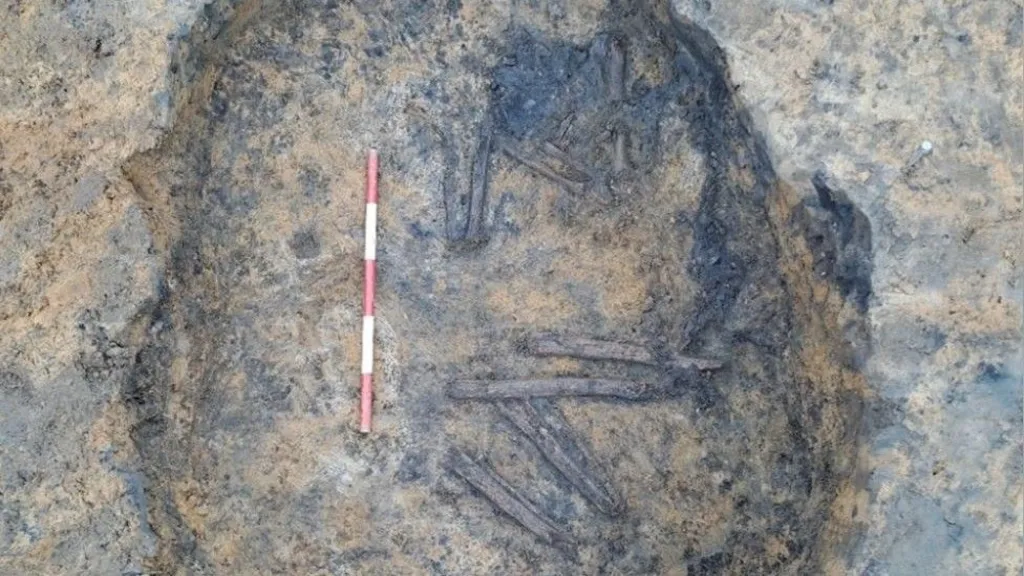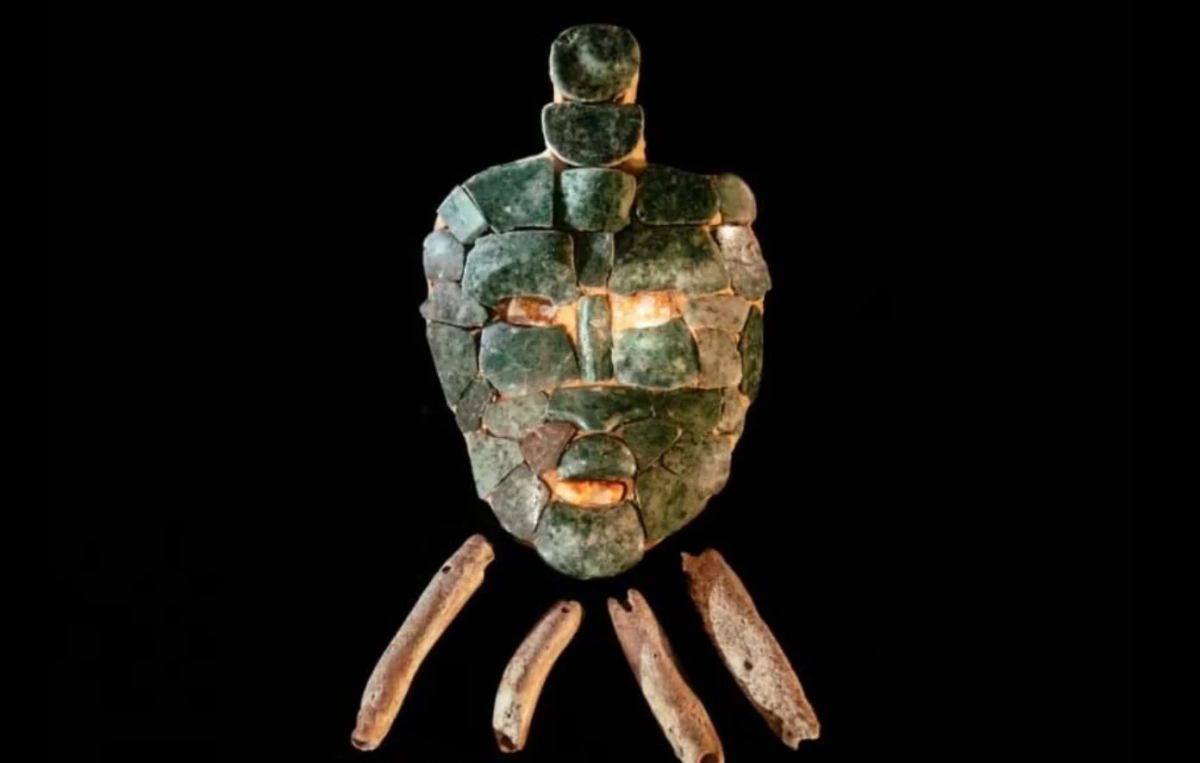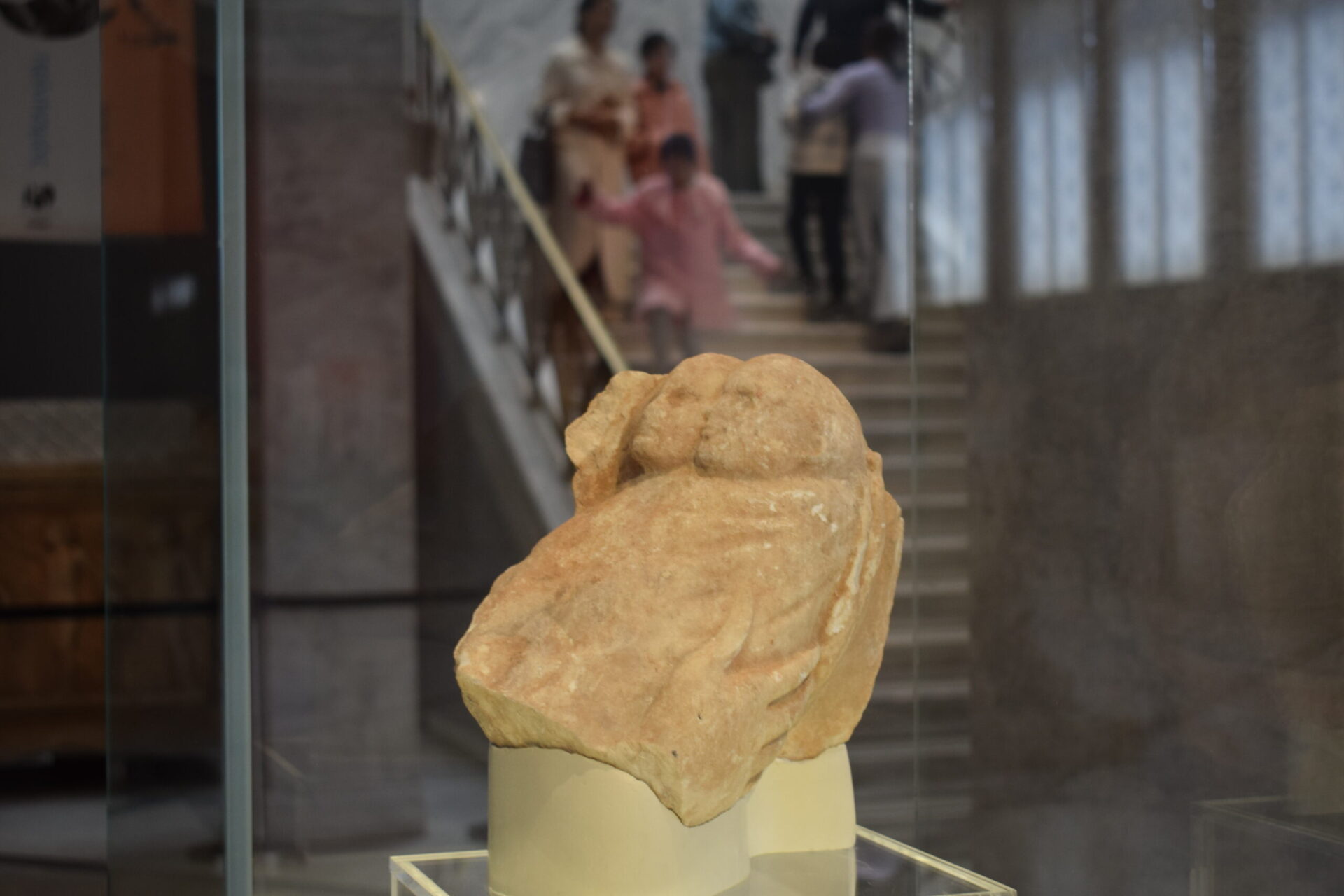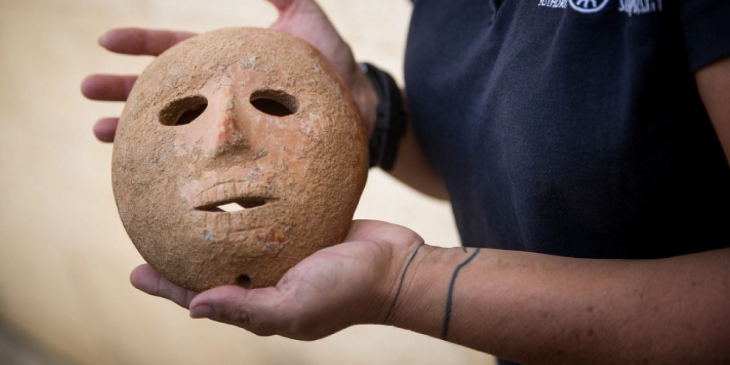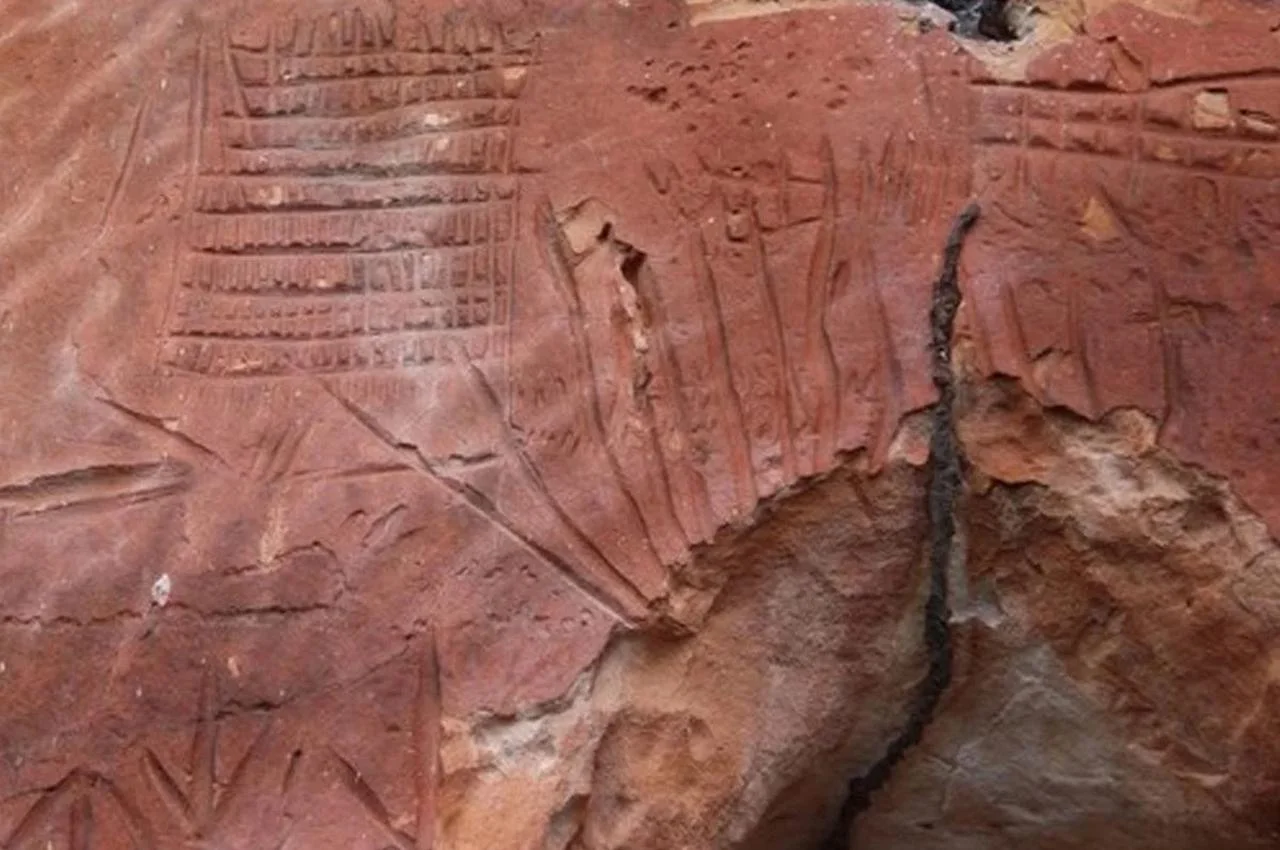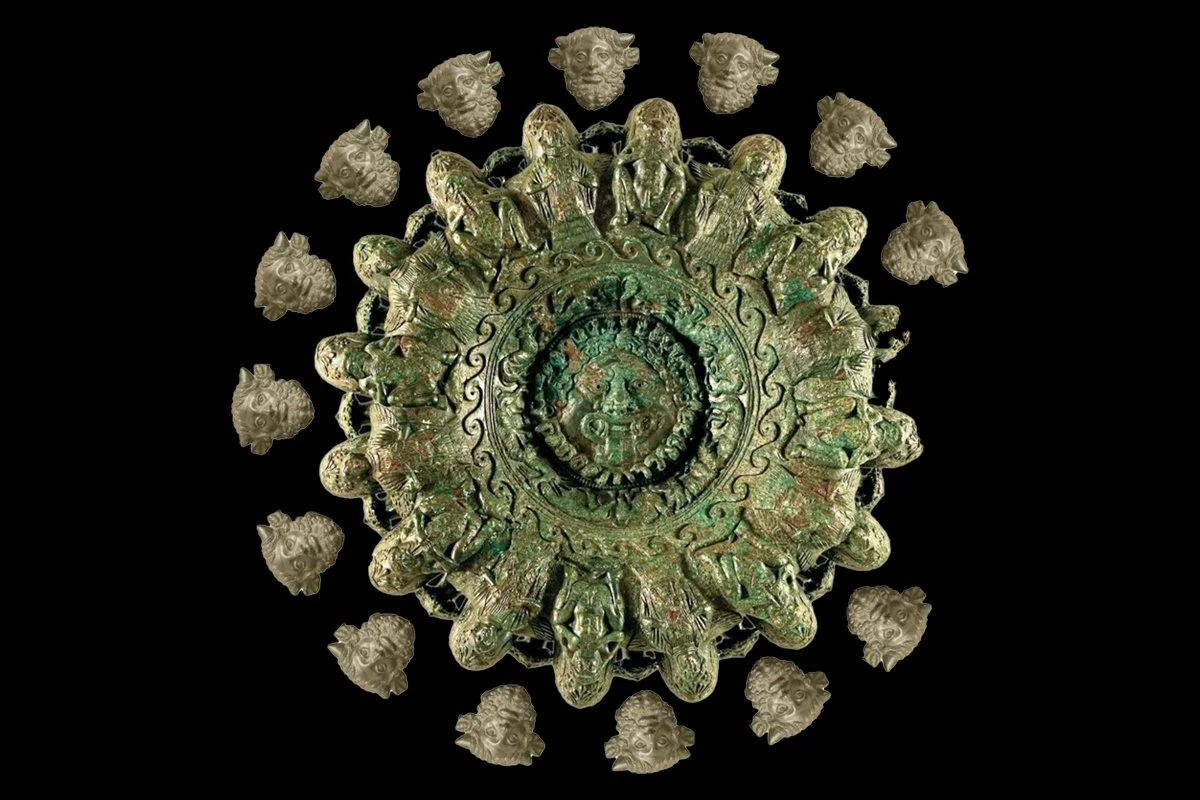Archaeologists in Jerusalem discovered a seal from the First Temple period written in Paleo-Hebrew during an excavation.
The discovery was announced in a joint press release by the Israel Antiquities Authority (IAA) and the City of David.
The Paleo-Hebrew inscribed seal from the First Temple period was discovered during an excavation by the City of David, near the South Wall of Jerusalem’s Temple Mount in the Davidson Archaeological Garden.
The stone seal shows a winged figure and a name carved in Paleo-Hebrew script.
“The black stone seal is one of the most beautiful ever discovered in excavations in ancient Jerusalem and is executed at the highest artistic level,” excavation directors Yuval Baruch and Navot Rom said in a press release. They said the seal served as an amulet and was used to sign documents and certificates.
“It has a convex cut on both sides and a hole drilled along its length so that it could be hung on a chain and worn around the neck. In the center a figure is depicted in profile… winged, wearing a long striped shirt and walking to the right.”
“This is an extremely rare and unusual discovery. This is the first time a winged ‘genie’ – a protective magical figure – has been found in the archaeology of Israel and the region,” said IAA archaeologist Filip Vukosavovic, adding that the seal was probably worn around the neck of Hoshayahu, who held a senior position in the administration of the Kingdom of Judah, as a symbol of authority.
“It seems that this object was made by a local artisan – an artisan named Judah, who produced the amulet at the request of its owner,” Vukosavovic said.
According to the hypothesis, upon Hoshayahu’s death, his son Jehoezer added his and his father’s names on both sides of the figure. The name Jehoezer appears in its abbreviated form in Chronicles I 12:7 – Joezer, one of King David’s warriors – and in Jeremiah (43:2), where a man with a parallel name – Azariah ben Hoshayahu – challenges Jeremiah’s message from God that survivors of the Babylonian invasion of Jerusalem should not settle in Egypt.
Prof. Ronny Reich of the University of Haifa said, “The shape of the letters and the writing, when compared to the shape of other Hebrew seals and bullas [clay seal impressions] in Jerusalem, suggest that the writing of the names on the seal was done in a sloppy manner, in contrast to the careful carving of the genie. It is not impossible that perhaps it was Jehoezer himself who carved the names on the object.”,
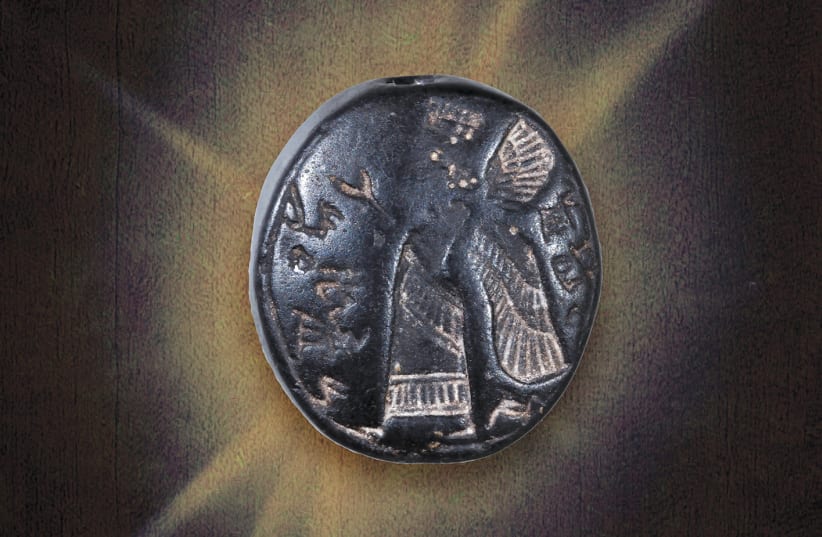
Dr. Baruch said the seal is clear evidence of the reading and writing skills that existed among the people at the time. “At the time, Judah in general and Jerusalem in particular were subject to and influenced by the hegemony of the Assyrian Empire – a reality that was reflected in cultural and artistic aspects,” he said.
“The fact that the owner of the seal chose a genie as the emblem of his personal seal may attest to a sense of belonging to a broader cultural context, just like people in Israel today who consider themselves part of Western culture.Yet within that feeling, this Jehoezer also held fast to his local identity and that is why his name is written in the Hebrew alphabet and his name is a Hebrew name belonging to the culture of Judah.
Dr. Baruch said that the seal is a clear testament to the reading and writing skills that existed among the people at the time.
“At the time, Judah in general and Jerusalem in particular were subject to and influenced by the hegemony of the Assyrian Empire – a reality that was reflected in cultural and artistic aspects,” he said.
“The fact that the owner of the seal chose a genie as the emblem of his personal seal may attest to a sense of belonging to a wider cultural context, just like people in Israel today who consider themselves part of Western culture. Yet within this feeling, this Jehoezer also clung to his local identity and that is why his name is written in the Hebrew alphabet and his name is a Hebrew name belonging to the culture of Judah.”
Cover Photo: Rare seal found near the Western Wall in Jerusalem depicting a winged figure. Israel Antiquities Authority



